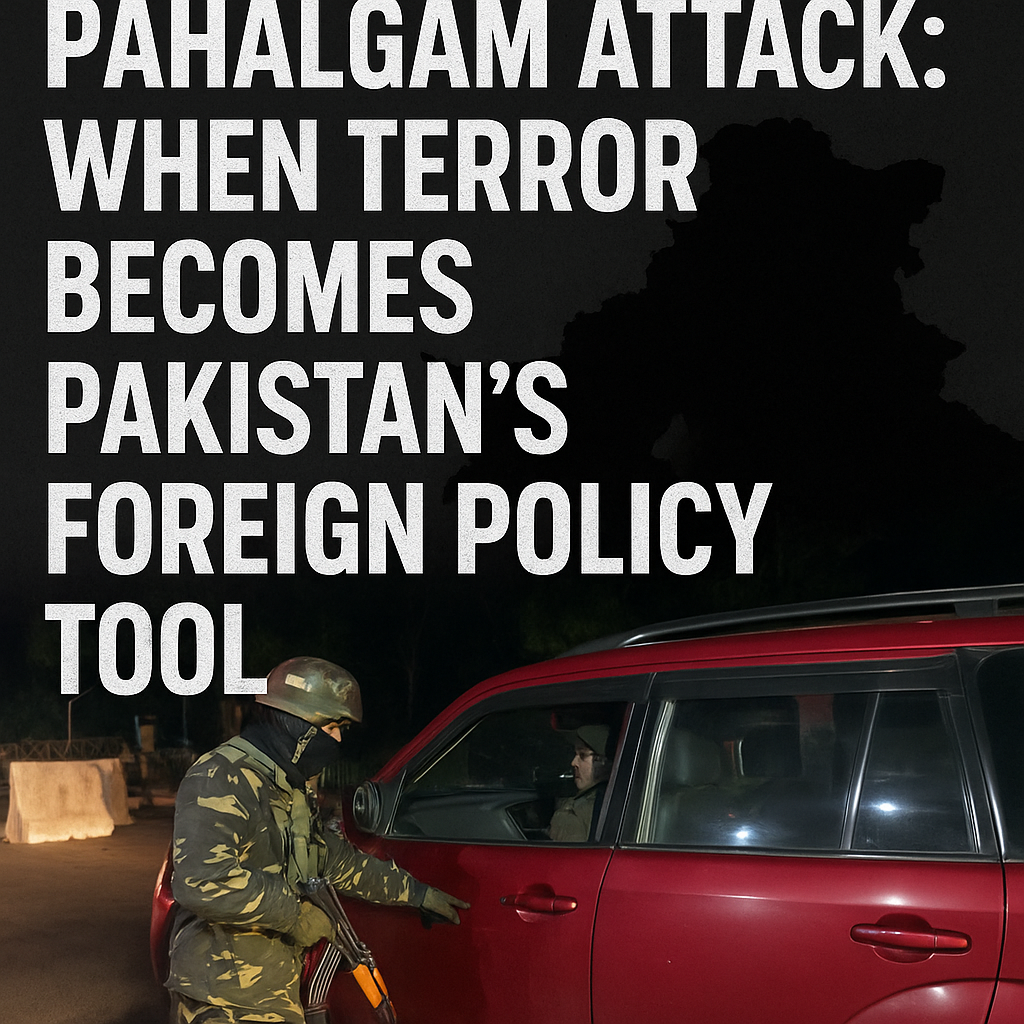
In yet another chilling reminder of the security challenges India faces in Kashmir, the recent terrorist attack in Pahalgam was not just a random act of violence—it was an orchestrated signal. And that signal, all signs suggest, originated from across the border.
The pattern is painfully familiar. Pakistan’s military establishment, cornered by domestic turmoil and political illegitimacy, reaches into its oldest bag of tricks: exporting terror to India. This time, it was the picturesque Pahalgam valley that bore the brunt of that doctrine, its serenity shattered by gunfire—yet again.
A Calculated Distraction from Domestic Collapse
What compels a state to repeatedly employ terror as an instrument of diplomacy? The answer lies in Rawalpindi, not Islamabad. Pakistan's elected government—largely symbolic since the ousting of Imran Khan—is overshadowed by the real power center: the military and the Inter-Services Intelligence (ISI).
Following a widely discredited election in February 2024, the Pakistani army has been grappling with an image crisis. Its preferred political puppet, the Pakistan Muslim League (PML-N), is failing to consolidate power amid rising public discontent. Meanwhile, Khan’s popularity among the masses has turned into a referendum against military overreach.
In such a climate, history teaches us what comes next—diversion. When the domestic temperature rises, the Pakistan army lowers its guns on its people and raises them toward India.
The Signature of a Familiar Enemy
The Pahalgam attack was not the work of fringe ideologues. As intelligence reports suggest, this was a planned infiltration, carried out by trained operatives equipped with advanced logistics and surveillance intel—hallmarks of ISI facilitation.
Security analysts have long warned of the evolving tactics of Pakistan-backed terror modules. Gone are the days of open infiltration and bannered militant outfits. In their place are hybrid networks—locals radicalized and remote-controlled from across the Line of Control (LoC), backed by Pakistani handlers with encrypted communication and cross-border finance.
The objective? Destabilize Kashmir, provoke Indian retaliation, and attempt to internationalize the issue once again.
Zia’s Ghost Still Haunts the Subcontinent
The ideological roots of such proxy warfare trace back to General Zia-ul-Haq’s infamous strategy: “bleed India with a thousand cuts.” That doctrine, never officially disowned, remains etched in the military playbook. What makes it more dangerous today is Pakistan's desperation.
Former R&AW officials like G.B.S. Sidhu have warned that Pakistan’s internal chaos—combined with a leadership crisis—makes it even more likely to lean on its one successful export: terrorism.
When the system crumbles, the army’s survival instinct kicks in. And that instinct has always relied on conflict, not compromise.
A Global Threat, Not Just India’s Burden
The international community must wake up to this pattern. Pahalgam isn’t an isolated tragedy—it is part of a long, bloodied chain of events stretching from Kargil to Uri, from Pulwama to now. Pakistan’s duplicity—presenting itself as a victim of terror while nourishing it in its backyard—should no longer be indulged with diplomatic courtesy.
Every time the world turns a blind eye; the cost is paid in Indian lives.
A Call for Firm Response
India must go beyond customary condemnation and dossier diplomacy. Diplomatic offensives must be backed by strategic countermeasures—covert disruption of terror infrastructure, economic sanctions targeting Pak-linked entities, and galvanizing international pressure to blacklist and isolate Pakistan’s military apparatus.
Let it be said plainly: the Pahalgam attack was not a lapse. It was a message. And the only fitting reply is one that makes it clear—terror as a tool of foreign policy will come at an unbearable cost.

